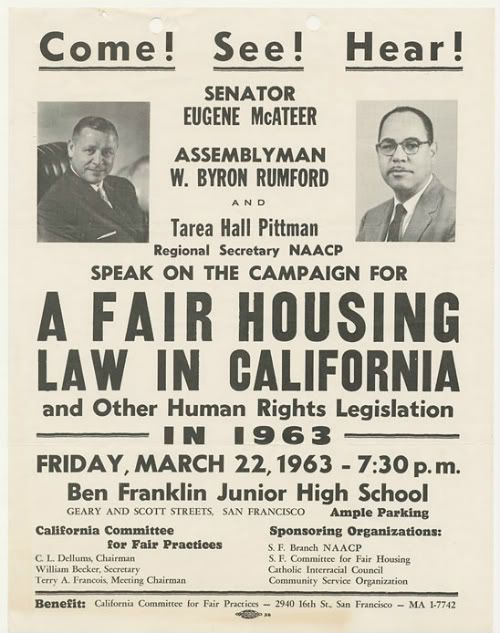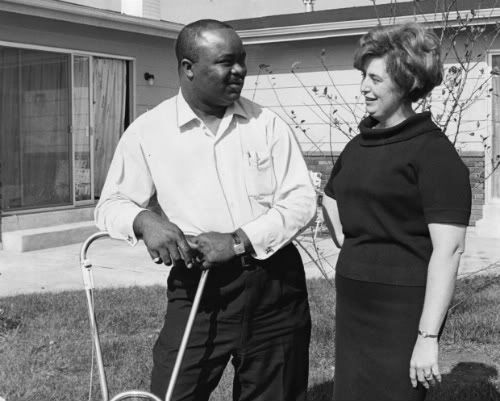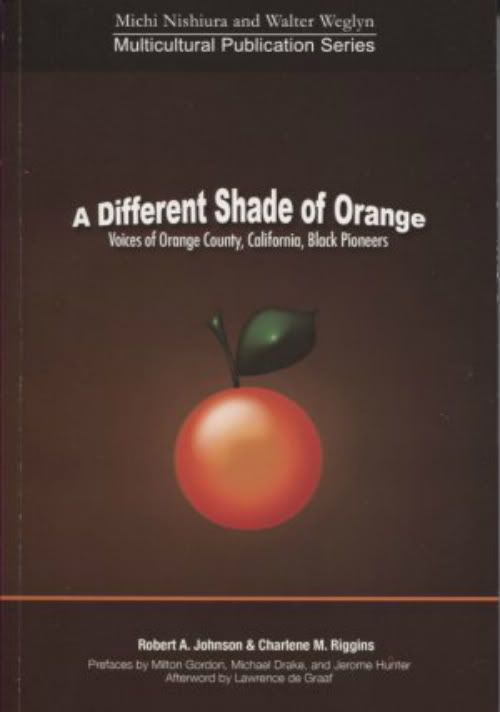Historically, Fullerton has not been a popular place for African Americans to live. U.S. Census data shows the following trend in Fullerton.
In 1920 the ratio of African Americans to total population of Fullerton was 18 to 4,415.
In 1930... 41 to 10,860.
In 1940...57 to 10,442.
In 1950...77 to 13,958.
In 1960...301 to 56,180.
In 1970...678 to 85,826.
In 1980...1,670 to 102,034.
In 1990...2,479 to 114,144.
In 2000...2,861 to 126,003.
The reasons for the historic unpopularity of Fullerton for African Americans are many. In the 1920s, there was an active Ku Klux Klan here that included members of City Council, the police force, pastors, and teachers. Until the Rumford Fair Housing Act of the 1960s, many neighborhoods in Fullerton had racial "Housing Covenants" which prevented minorities like African Americans from living there. There was, for many years, a general climate of racism here.
In Fullerton, for many years, the only neighborhood where minorities were allowed to rent or own homes was on the other side of the railroad tracks, in the Truslow/Valencia area. Mary Owens, an African American woman who moved to Fullerton in the 1940s recalls, "At first we had gone to look for apartments, and they would not rent to us. Leon [her husband] said, 'You know, we're going to have to buy a house here.' That's what happened. We bought a house, this house [on Truslow]."
Warren Bussey, an African American man who moved to Fullerton in the early 1950s, tells a similar story: "We [blacks] were only living on two blocks [he lived on Truslow as well]...Living in California at that time, it was more prejudiced than it was in Texas."

In 1974, Ruth May, who was the niece of the famous African American author and educator W.E.B. Du Bois, was interviewed about her life and her choice to move to Fullerton in the 1960s to accept a teaching position at Cal State University, Fullerton. Her words are inspiring. When asked by the interviewer "How did the people of Fullerton accept you socially?" she replied:
"We had no problems. I will admit that in some of the communities, people raised eyebrows when we went to look at the houses. In some cases, when they saw we were a minority, we were sort of discouraged from looking at the houses.
My husband and I have the philosophy that if we want something and we can afford to buy it, then we should go after it. If we see something, if we want to live in a community, we don't feel that there should be any blocks in our way, legally. There are obstacles, but there should not be, and we know there are laws that prevent discrimination in housing.
At the same time, there are a lot of Blacks who are afraid to venture into a new area because they feel that they might be looked down upon, or they might be discriminated against. But we don't go into an adventure with this feeling. We go feeling that we are just as capable of going into this community, we have as much of a contribution to make as anybody else, and we don't expect any trouble.
When we located our present house, we knew it was in Orange County; we did not discuss the possibility that we might have problems. We didn't anticipate any problems, and yet, in the back of our minds we both knew, though we didn't say it, that some block or hurdle might be put in the way to prevent us from getting a house in Fullerton, because we knew that other people had had problems.
But I must say that we did not experience any difficulty. We worked through the regular procedures, we applied, we put our down payment, said this is the house we want. We had our down payment, we were investigated and our credit was approved, and we just went from there and moved right in.
We've always been outgoing people and our children are. When we came into the neighborhood and met the kids, we naturally spoke to the kids, and our children began to make friends immediately. It wasn't any time before we felt completely at home in our new environment.
We have never experienced any racism or any evidence of discrimination in any way in the schools. Not that the children may not have had something said to them at one time or another, because the schools in our area are primarily white, and that's unfortunate.
There should be more of an ethnic balance in this area. I wish there were more Blacks in this community, because I wish our children had the experiences of having more Blacks in the schools which they attend, but, we haven't really had any problems."

Tyrone L. Perry is an African American who attended Cal State University, Fullerton from 1969-1973, and then took a job on campus as a Financial Aid Counselor and the Work-Study Coordinator. In a 1974 interview, he talked about being a student at Cal State Fullerton and some issues with Financial Aid:
"When I first started school, financial aid wasn't well known yet. These were the fist years of EOP when I graduated from high school, the Educational Opportunities program which provided money for minorities to go to school, and provide admissions for students who didn't do that well in high school to get any kind of job.
When I graduated [high school] in 1967, these were the first years that that program was really coming into effect. Even though it didn't cost a lot of money to go to a state college. It cost about sixty dollars, which wasn't laying around the house every day. My parents had to find sixty bucks to send me to school. They had to provide some kind of transportation and the whole thing. They were good parents, I would say.
I attended Cal State Fullerton the fall of 1969 through spring of 1973. Actually I haven't seen that much change from that time. Different people, basically, but it seems to be the same. There's been some progress made as far as numbers of minority students admitted to the school, but then again, the school has grown a bit, too. In proportion it hasn't done as much as I thought it would. There's still not very many Blacks on campus; there's still not very many Chicanos on campus, when you look at the overall picture. In the past few years, Federal financial aid assistance has been cut, year by year. In the near future there won't be as much financial aid."
That was in 1974. Since then, tuition has increased a great deal, and financial aid assistance has had seasons of cuts and increases. Speaking from my own experience, I have noticed a large increase in the number of minority students since I started there as a student in 2004. The English classes I teach are very diverse. However, when I look at the overall picture of the Fullerton population, I think the colleges are something of an anomaly. The colleges seem to be much more diverse than the community-at-large. However, living in Downtown Fullerton, I have noticed a trend toward more diversity. I will be very interested to see what the make-up of this community is in 2020, the next U.S. census. I think it will reflect changing cultural and social values, and an increasing acceptance of minorities into the Fullerton community.

Sources:
U.S. CENSUS BUREAU
A DIFFERENT SHADE OF ORANGE: VOICES OF ORANGE COUNTY, CALIFORNIA, BLACK PIONEERS. By Robert A. Johnson, and Charlene M. Riggins
THE CSUF CENTER FOR ORAL AND PUBLIC HISTORY
